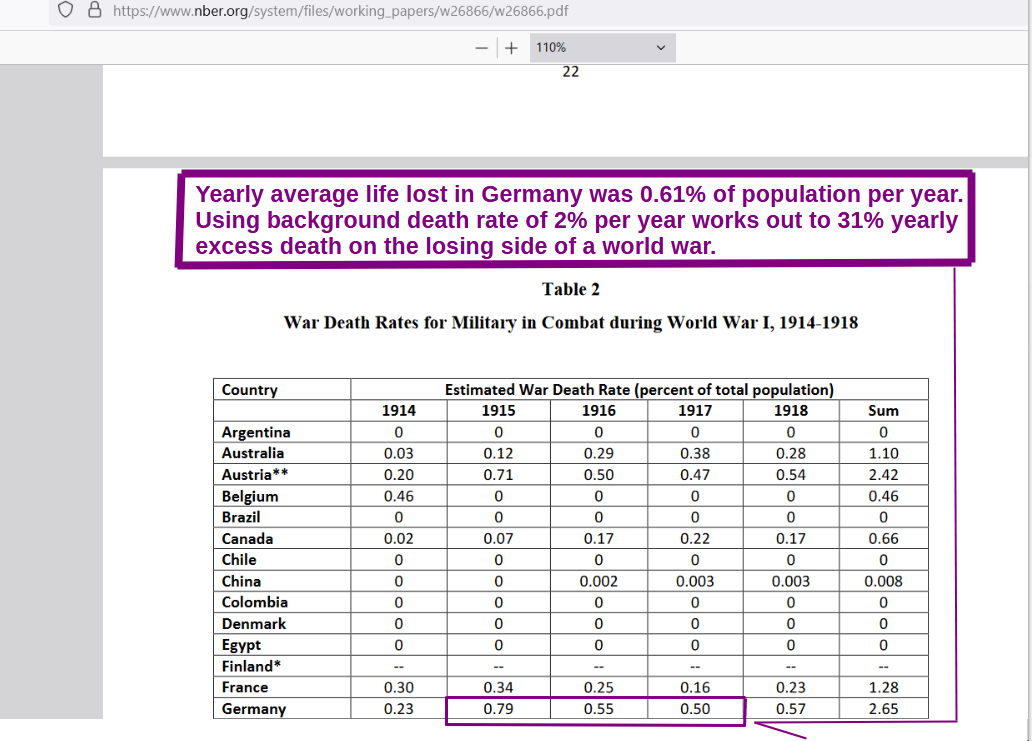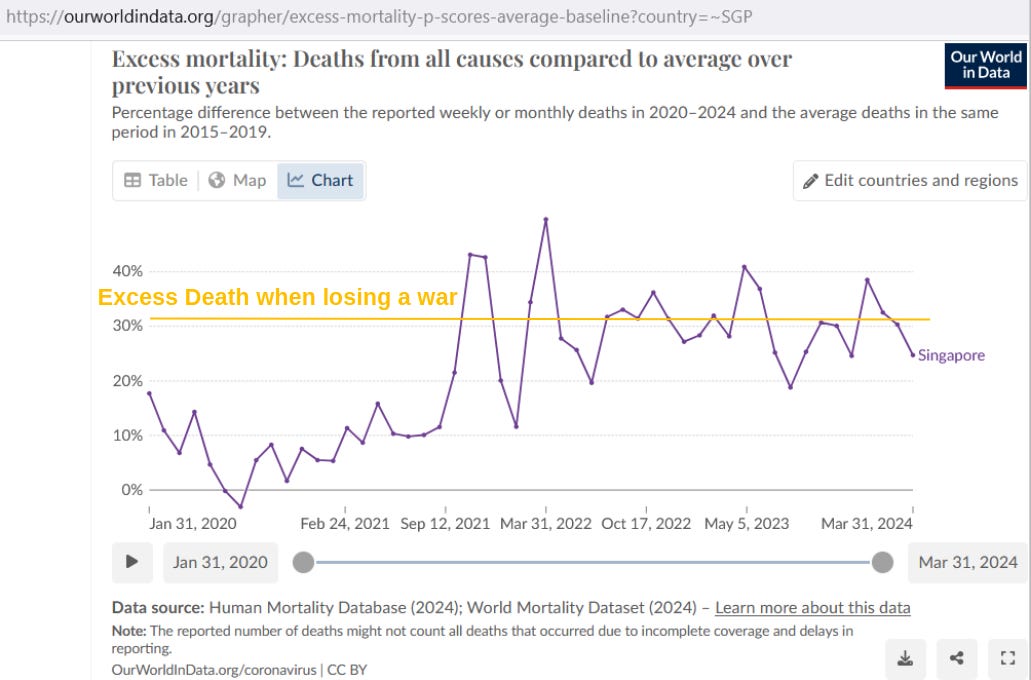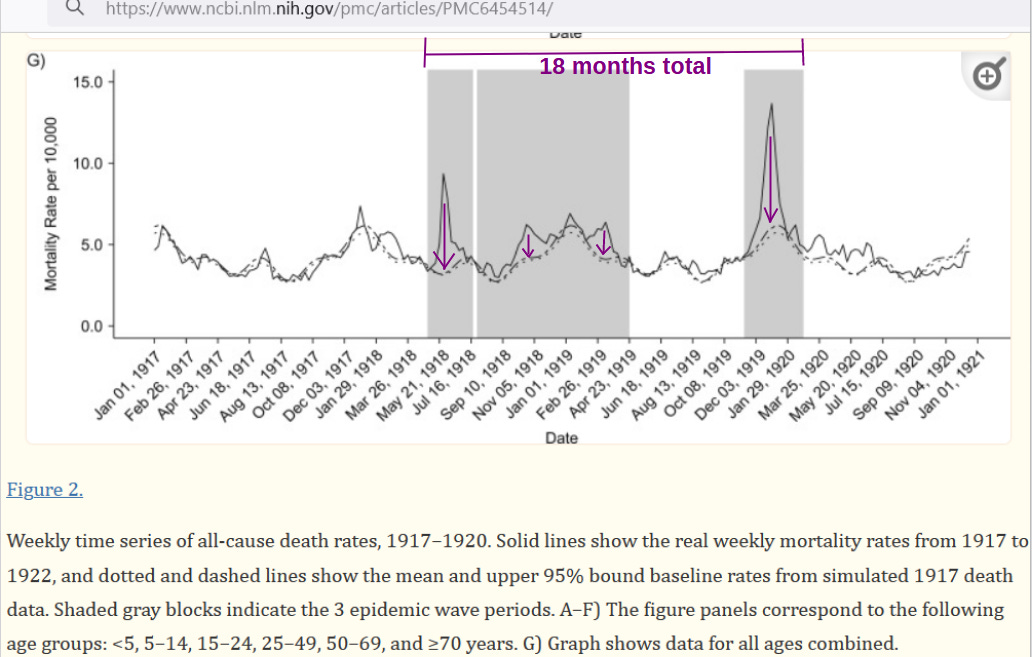In this post, it was revealed that excess death in Singapore has been running high for 2.5 years. To get perspective on the historical precedent for such high death for such a long time-window, you have to go back to the time when there were world wars. Germany was on the losing side of World War I, showing excess death (marks added):
By losing an average of 0.61% of its population each year due to war, and under the assumption that the background death rate in Germany back then was around 2%, you get an average yearly excess death of 31% excess yearly deaths. But look what happens when you superimpose that “average rate of death when losing in a war” on Singapore:
For 2.5 years, it is just as if Singapore has been involved in a world war and has been on the losing side of it (where the war deaths are higher). They are seeing a kind of sustained excess death that, historically, is only possible with war.
Even the 1918 Spanish Flu did not create this much sustained excess death (for this long of a time frame). As said before, the prime suspect in creating this persistently-high rate of excess death in Singapore is the COVID shot — because Singapore had a COVID shot uptake rate that was twice the world average on 1 Oct 2021.
Reference
[excess deaths] — OWID. https://ourworldindata.org/excess-mortality-covid
[war deaths] — THE CORONAVIRUS AND THE GREAT INFLUENZA PANDEMIC: LESSONS FROM THE “SPANISH FLU” FOR THE CORONAVIRUS’S POTENTIAL EFFECTS ON MORTALITY AND ECONOMIC ACTIVITY. https://www.nber.org/system/files/working_papers/w26866/w26866.pdf
[18 total months of Spanish Flu in Spain] — Cilek L, Chowell G, Ramiro Fariñas D. Age-Specific Excess Mortality Patterns During the 1918-1920 Influenza Pandemic in Madrid, Spain. Am J Epidemiol. 2018 Dec 1;187(12):2511-2523. doi: 10.1093/aje/kwy171. PMID: 30124746; PMCID: PMC6454514. https://www.ncbi.nlm.nih.gov/pmc/articles/PMC6454514/
[purple markings added]:





Excellent. Great work. Thank you.